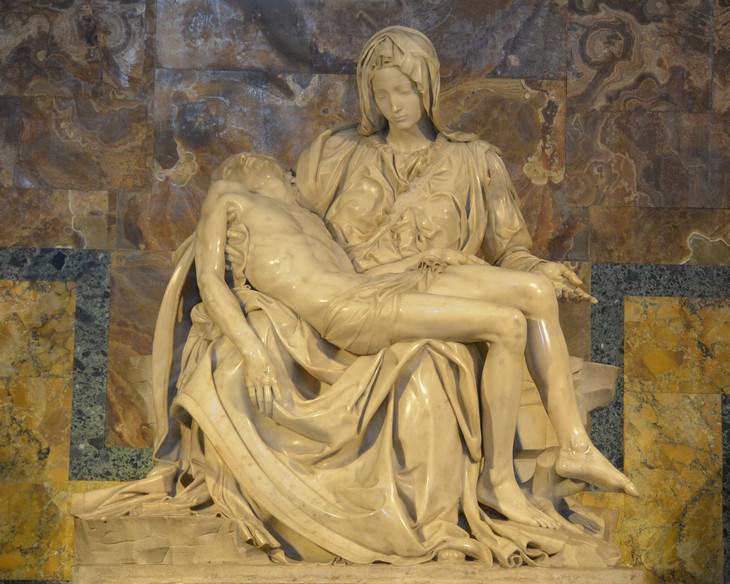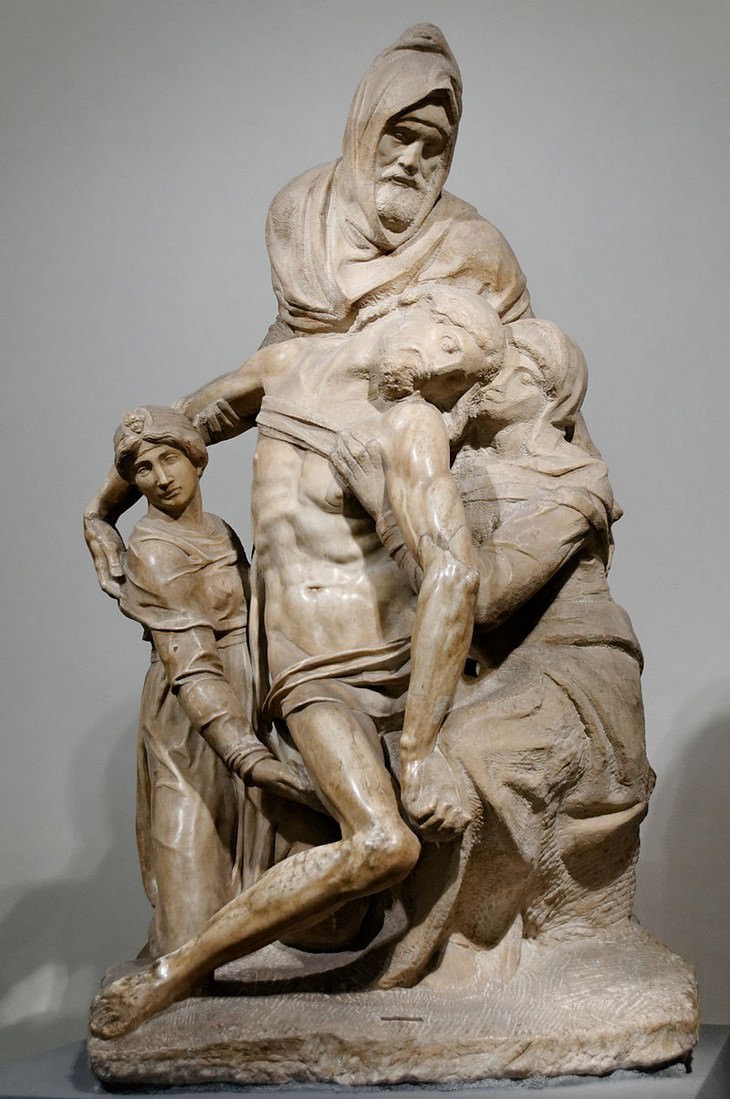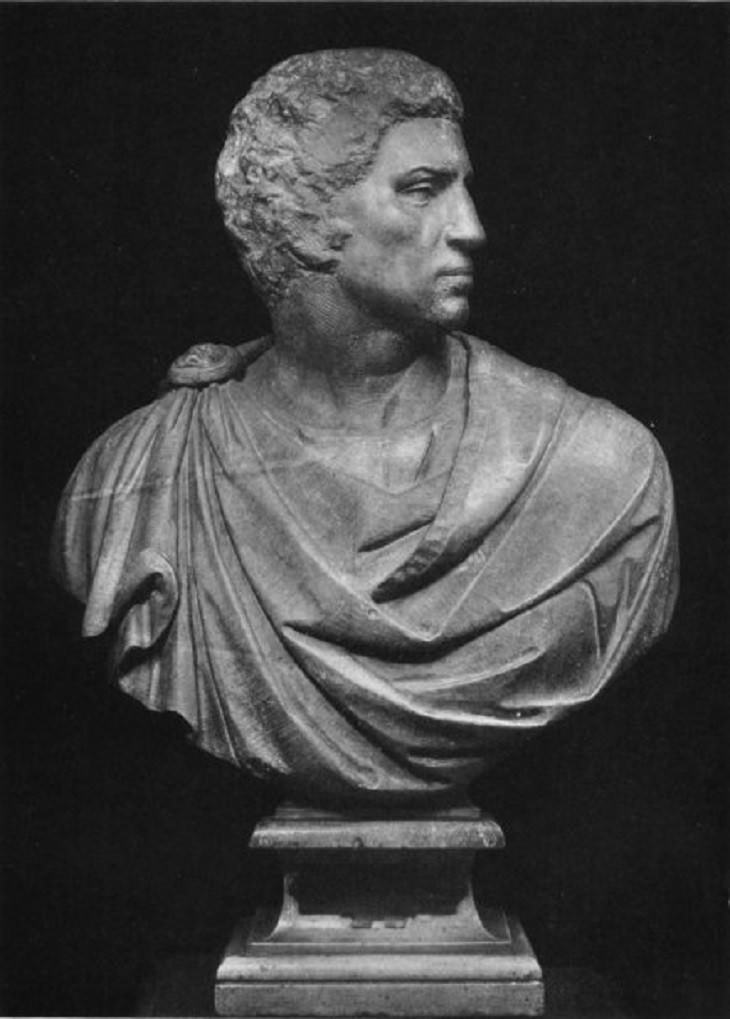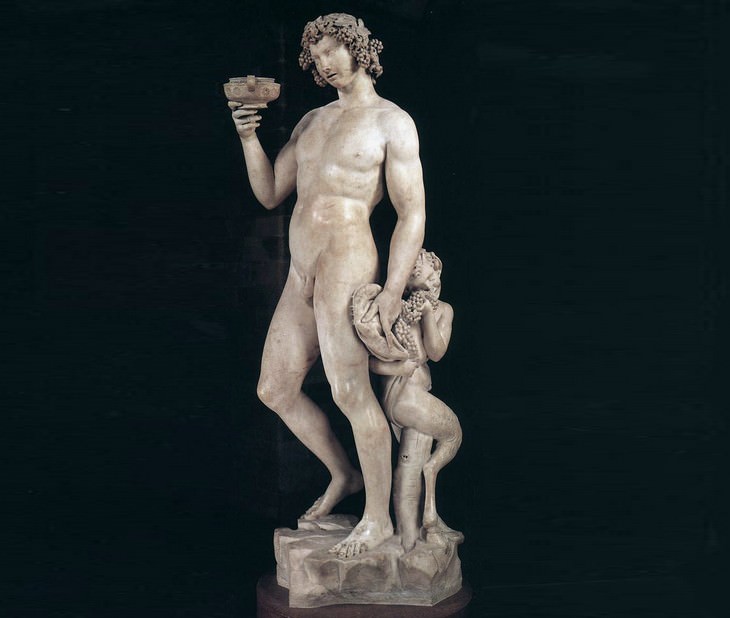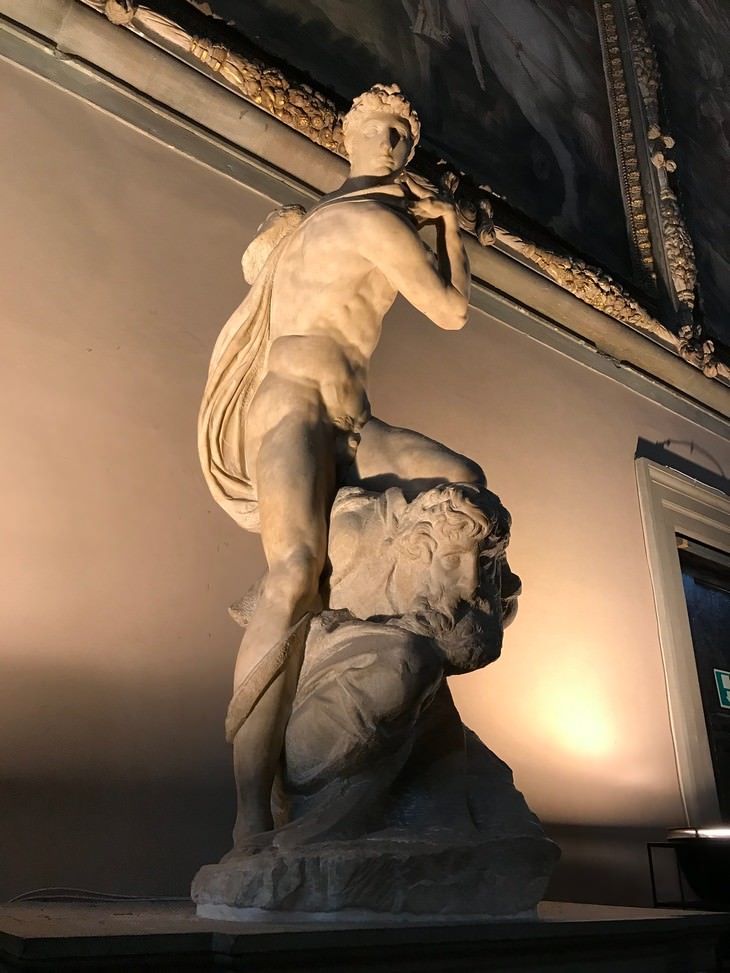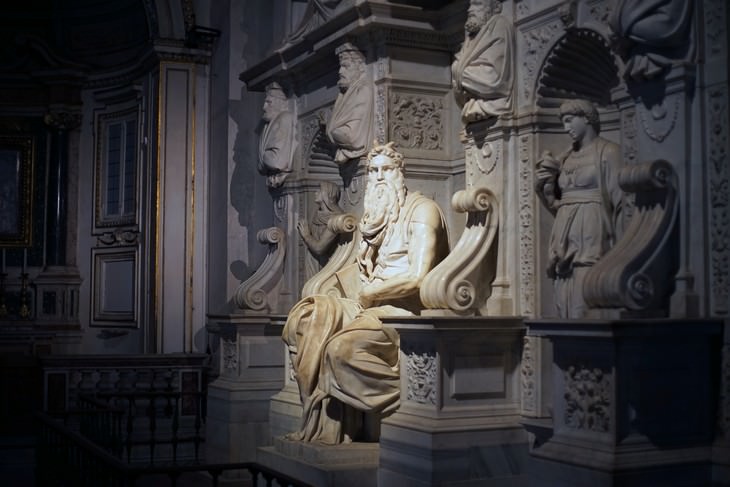When recalling well-known artists, we may immediately think of Michelangelo. Michelangelo Buonarroti is recognized as one of the most significant figures in the Italian Renaissance. He created numerous works that are considered the pinnacle of Western art. His exceptional abilities, particularly his precision, have resulted in his works being highly sought-after by tourists from all over the world, who eagerly visit museums that showcase his sculptures and paintings. However, one need not travel to Florence or Rome to appreciate these rare works of art and absorb the culture. We have compiled a list of the top 8 most exquisite Michelangelo sculptures, along with the fascinating stories behind them.
1. The Dying Slave and the Rebellious Slave
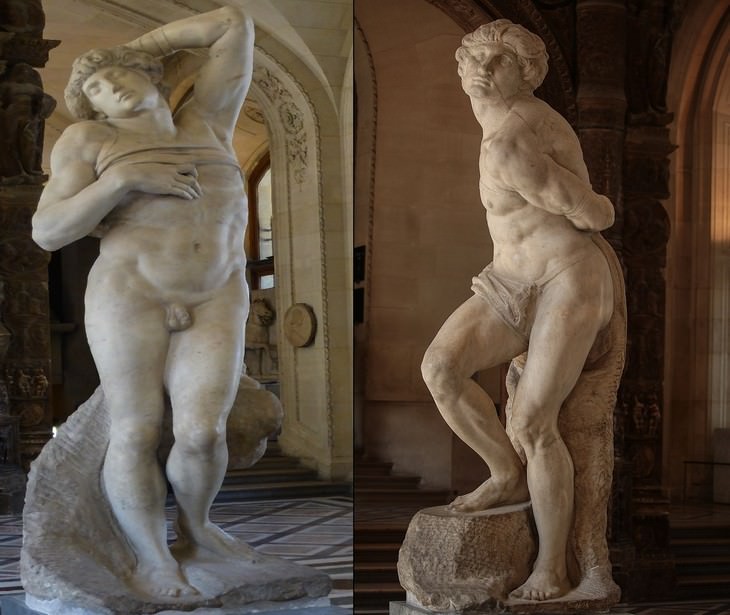
The two statues were commissioned by Pope Julius II's heirs in 1513 to erect a magnificent monument in St. Peter's Basilica. But this tombstone was never erected, and the magnificent works passed from hand to hand for more than 200 years. They were confiscated by the French authorities and transferred to the Louvre Museum in Paris, where they are still located today. When creating these sculptures, Michelangelo drew inspiration from ancient Greek sculptures, but the meaning of the slave sculptures remains unknown to this day.
The two sculptures express contrasting emotions - the dying slave appears as a young and handsome figure in a deep and sweet sleep, while the rebel appears as one whose body is involved in a violent struggle. If you look carefully at the picture, you must notice that these two works are not finished. This characterizes many of Michelangelo's works, to which is attributed the motto "non-finito" according to which the artist tends to abandon works when he does not feel he is realizing his ideal.
2. Pieta
"Pieta" is a general art style associated with Christianity and characterized by the creation of the image of Mary cradling her dead son Jesus after he was taken down from the cross. The sculpture you see in the picture is one of the most famous of Michelangelo's works. It is considered one of the first works attributed to him and claimed that he created it when he was 24 years old.
The sculpture is carved entirely from white marble and shaped with amazing precision using a hammer and chisel. This inspires amazement in the final product. Today the statue is placed in St. Peter's Church in Vatican City, and since 1972 it has been protected by glass walls after a geologist by the name of Laszlo Tut broke into the complex in a fit of madness, holding a heavy hammer and used it to break parts of the statue while shouting "I am Jesus Christ, I have risen from the dead." The damaged parts include Maria's hand and part of her face.
3. The Florentine Pieta
Michelangelo's third Pieta depicts Christ's removal from the cross. It is made entirely of marble, standing at 2.26 meters tall. The sculpture features a central figure of Jesus, with two women supporting his body on either side - identified as Mary, his mother, and Mary Magdalene. Behind Jesus is the figure of Nicodemus, believed to be Nicodemus Ben Gurion from the Talmud. Ben Gurion was a wealthy Jerusalem resident before the Second Temple's destruction. The artwork can be found in the Duomo Museum in Florence, Italy, and underwent preservation work in 2019.
4. Brutus
Displayed in the photo above is a statue of Marcus Junius Brutus - a significant Roman politician who opposed Julius Caesar and actively participated in the plot to assassinate him. The statue's likeness to Brutus is based on coin portraits from his time as a Roman official during 42-44 BC. Unlike traditional Roman sculptures, modern statues were mounted on pedestals and only depicted the upper half of the figure. The statue in the photo portrays Brutus donning a toga, a thin woolen garment worn in Rome, with his head turned to the side. The artwork is currently housed in Italy's Bargello Palace in Rome.
5. Bacchus
The artwork titled "Bacchus" depicts the character of Dionysus, also known as "Bacchus", who is recognized as the god of wine, nature, and fertility in Roman mythology. The sculpture portrays him in a pose that suggests inebriation. It has a satyr - a creature part man and part goat in Greek mythology - standing behind him and consuming grapes. Bacchus wears a wreath made of ivy leaves and holds a wine goblet in one hand and a tiger's skin in the other. This animal is associated with Bacchus. This piece is one of Michelangelo's earliest works in Rome, along with the Pieta. It is currently exhibited at the National Museum of Bargello in Florence, Italy.
6. The Genius of Victory
Michelangelo's "non-finito" theme includes the Genius of Victory, a piece of work started in 1532 and left unfinished in 1534 when the artist moved to Rome. This statue was commissioned with the slave statues for Julius II. They share similar dimensions and body twists, and they showcase vibrant anatomy. The statue portrays a young warrior who, with exemplary skill, defeats an old bearded man. His expression conveys acceptance of his outcome. Unlike the slave statues in the Boboli Gardens, the Genius of Victory was moved to Florence's "Hall of the Five Hundred."
7. Leah
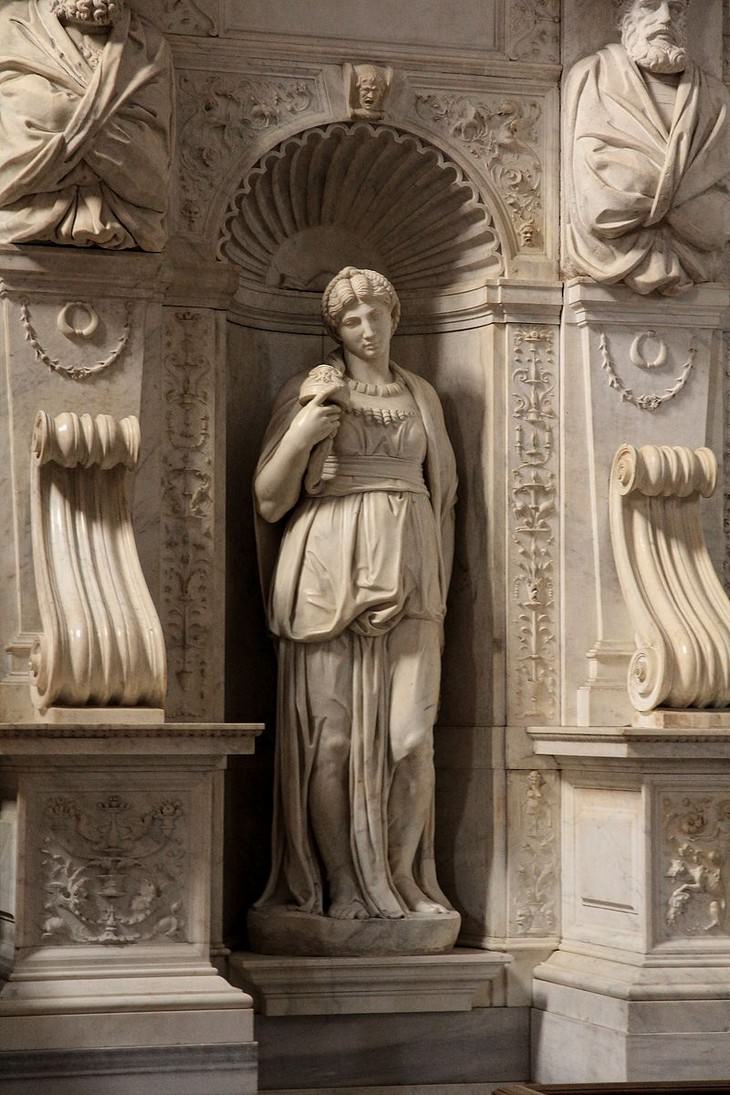
The picture features a figure named Leah, one of the four matriarchs of Israel mentioned in the New Testament. Michelangelo's sculptures, "Leah" and "Rachel," were the last pieces he made for Julius II's tomb. They are currently housed in Rome's Basilica of San Pietro in Vincoli. Christians view Leah as a biblical heroine. In the statue, she is depicted as a compassionate Christian sister wearing a traditional dress and holding a mirror. Positioned to the right of Moses' statue (which is discussed in the following section), Leah symbolizes physical strength, while Rachel, located to Moses' left, represents spiritual power.
8. Moses
Michelangelo was commissioned by Pope Julius II to create a piece consisting of around 40 different statues, with Moses' statue as the central component. The statue features Moses wearing a toga-like garment, holding the Tablets of the Covenant in his right hand, and sporting a long curly beard. He wears sandals with leather straps tied along his calves. Of particular interest is the presence of small horns on Moses' head. These horns, which Michelangelo may have mistakenly included as a reference to Satan due to an error in the translation of the word "horn" in the biblical story of "Moses' radiant face."


